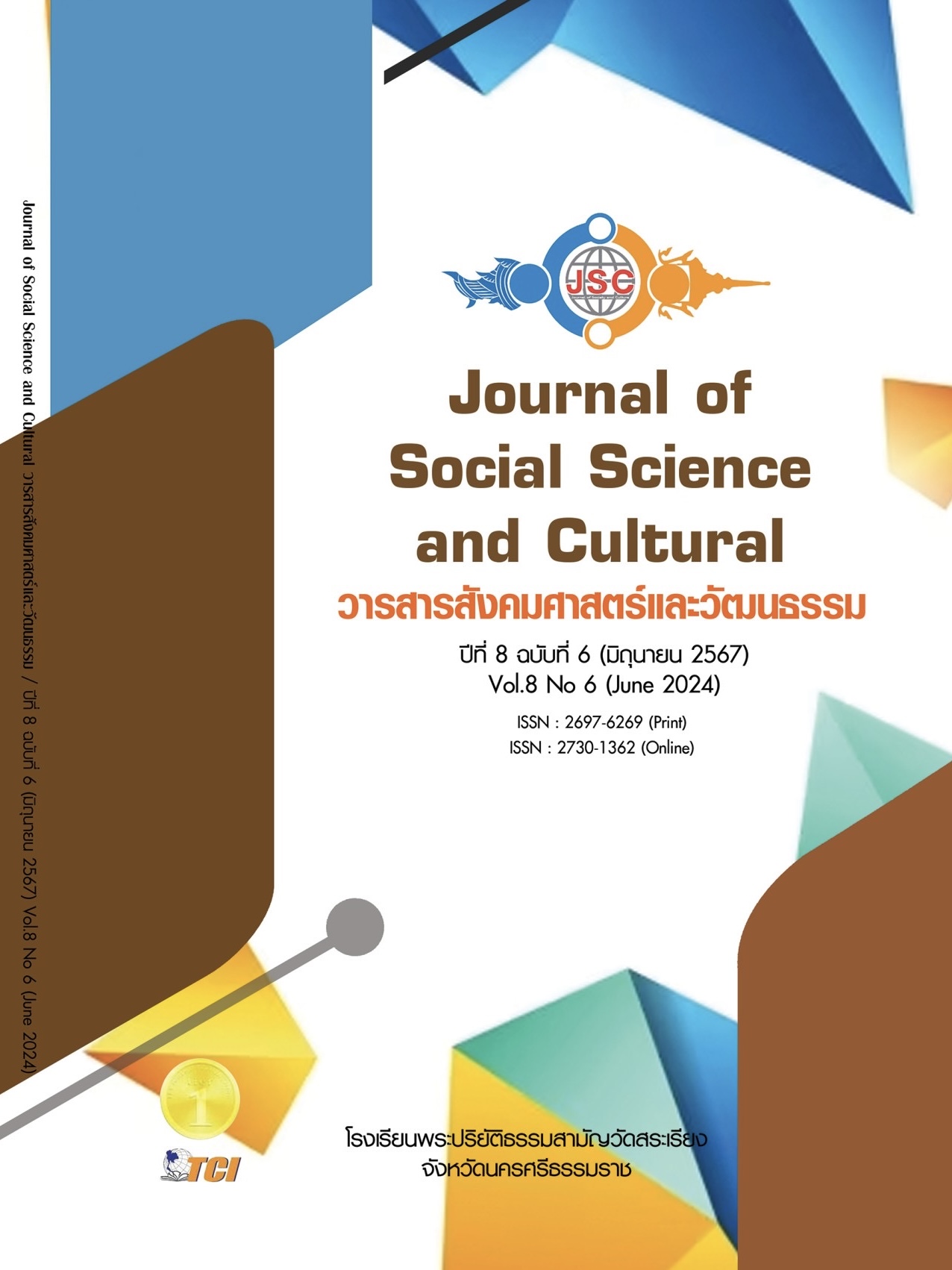BRASS PERFORMANCE BY MUSICIANS IN RATCHABURI PROVINCE
Main Article Content
Abstract
The objectives of this research article are to study: 1) the history of brass instrument performance, the practice and rehearsal conditions, and the performance of musicians in Ratchaburi province; 2) the state of brass instrument performance for professional purposes and musical activities of musicians in Ratchaburi province; and 3) the problems associated with brass instrument performance, solutions to these problems, and ways to promote and support the development of brass performance skills among musicians in Ratchaburi province. It employs a methodological approach grounded in qualitative inquiry, utilizing interviews, participant and non-participant observation as primary data collection tools. Additionally, two focus groups, each comprising 10 to 15 participants, were convened to further enrich the data. Analysis of the study findings will be conducted through a descriptive analytical framework. The findings indicate that brass instruments are utilized in various musical ensembles in Ratchaburi, including local brass bands, military bands, string combo bands, and ramwong yonyook bands. Professional musicians typically receive training from these ensembles with local brass bands, military band musicians were trained by military band instructors. Musicians involved in these ensembles often consider music as a secondary occupation, earning income ranging from 350 to 1,000 baht per assignment. They participate in music activities both within and outside educational institutions. Challenges faced by brass musicians include playing techniques, instrument selection, repertoire, performance venues, among others. These resulted in musicians gaining knowledge and understanding of appropriate, step-by-step practice and rehearsal processes, leading to the proper development of their performance skills.
Article Details
References
คมสันต์ วงค์วรรณ์. (2553). ดนตรีตะวันตก. (พิมพ์ครั้งที่ 2). กรุงเทพมหานคร: สำนักพิมพ์แห่งจุฬาลงกรณ์มหาวิทยาลัย.
ณรงค์ชัย ปิฎกรัชต์. (2563). ความสำคัญของ “เพลงเรื่อง” ต่อการพัฒนาศักยภาพนักดนตรีไทย. วารสารศิลปกรรมศาสตร์จุฬาลงกรณ์มหาวิทยาลัย, 7(1), 43-59.
ณรุทธ์ สุทธจิตต์. (2550). สังคีตนิยม: ความซาบซึ้งในดนตรีตะวันตก. (พิมพ์ครั้งที่ 7). กรุงเทพมหานคร: สำนักพิมพ์แห่งจุฬาลงกรณ์มหาวิทยาลัย.
ณัชชา พันธุ์เจริญ. (2564). พจนานุกรมศัพท์ดุริยางศิลป์. (พิมพ์ครั้งที่ 5). กรุงเทพมหานคร: เกศกะรัต.
สิน พันธุ์พินิจ. (2554). เทคนิคการวิจัยทางสังคมศาสตร์. กรุงเทพมหานคร: บริษัทจูน พับลิชชิ่ง จำกัด.
สุกรี เจริญสุข. (2539). แตรและแตรวงของชาวสยาม. กรุงเทพมหานคร: ด็อกเตอร์แซก.
สุกรี เจริญสุข. (2540). การเรียนรู้เพื่อพัฒนาสุนทรียภาพ: ดนตรี ศิลปะ และ กีฬา. วารสารครุศาสตร์จุฬาลงกรณ์มหาวิทยาลัย, 26(1), 61-66.
อภิชัย เลี่ยมทอง. (2555). หลักสำคัญสำหรับการฝึกซ้อมดนตรีเพื่อประสิทธิภาพสูงสุด. วารสารดนตรีรังสิต, 7(1), 29-39.
Denzin, N. (1978). Sociological Methods: A Sourcebook. New York: McGraw Hill.
Nastasi, K. & Schensul, L. (2005). Contributions of qualitative research to the validity of intervention research. Journal of School Psychology, 43(3), 177-195.


